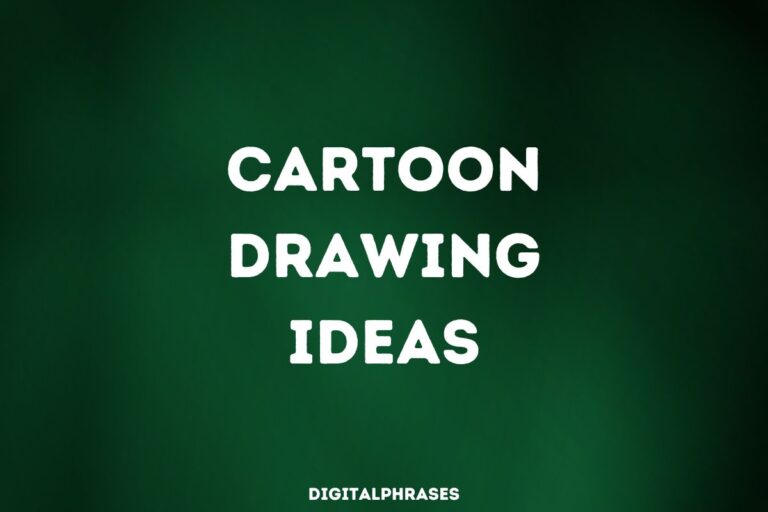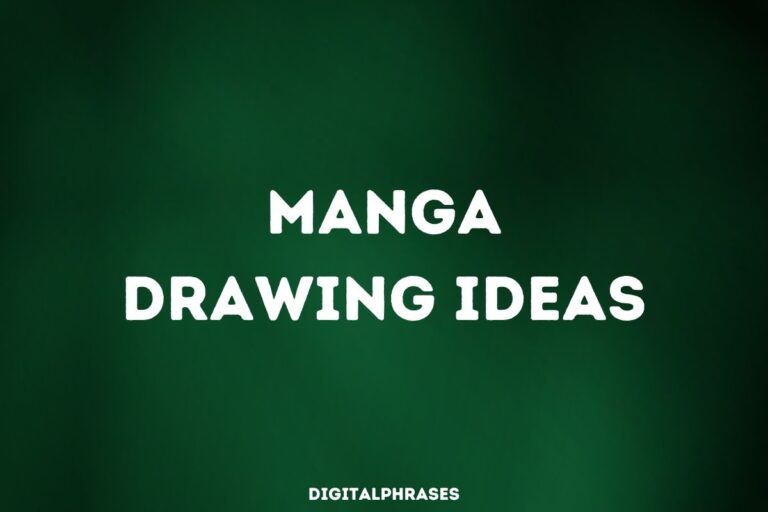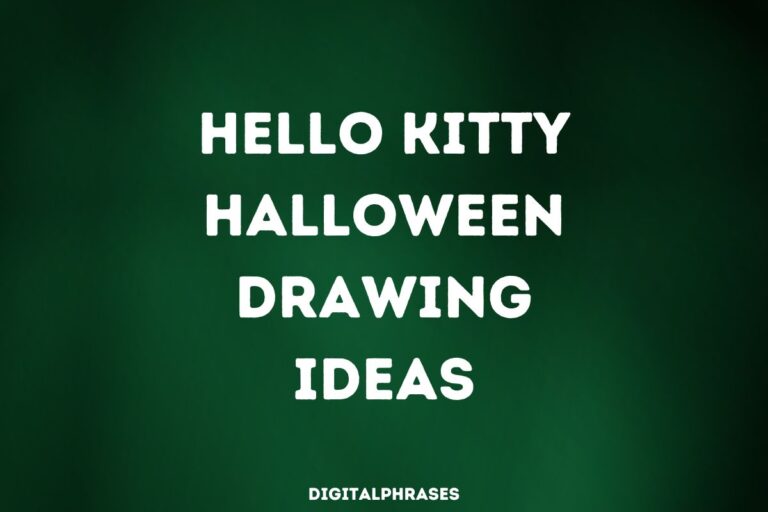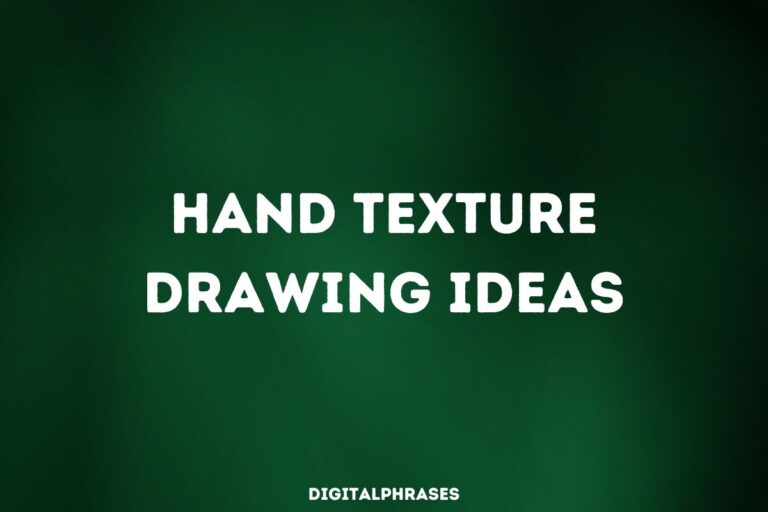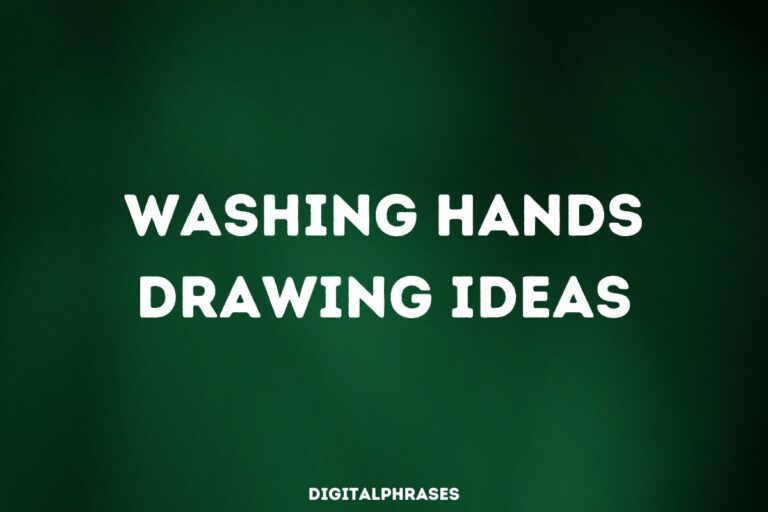48 Easy Drawing Ideas
Have you ever felt that itch to draw, but the thought of tackling something complicated made your pencil freeze?
Maybe you’re convinced you “can’t draw,” or you simply need a burst of fresh inspiration.
Well, I’m here to tell you that drawing should be fun, relaxing, and totally accessible, no matter your skill level.
Think of it like this: everyone starts by learning their ABCs before writing amazing stories. In the same way, simple shapes, everyday objects, and the wonders of nature can be the building blocks for incredible drawings.
We’re about to dive into a whole bunch of easy ideas to get those creative juices flowing.
Whether you’re a seasoned artist looking for a quick, playful exercise or a total beginner excited to pick up a pencil, these ideas are for you.
Let’s check them out.
Basic Shapes and Patterns
A 3D Circle Lying on a Table
Imagine a perfectly round ball resting on a worn, wooden table. Draw the curve of the circle where it meets the table’s surface.
Think about the light hitting the scene – is there a soft shadow beneath the ball?
Can you see the faint reflection of the table’s texture on its glossy surface?

A Rectangular Prism Lying Broken on a Piece of Land
Picture a rectangular block, maybe an old brick, lying amidst grass and dirt.
It has broken in half – how can you show the jagged, uneven texture of the broken surface?
Draw some fallen pieces next to it.
Is there a gentle slope to the land, or is it flat?
Add in some long grass or a few wildflowers to give it a feeling of place.
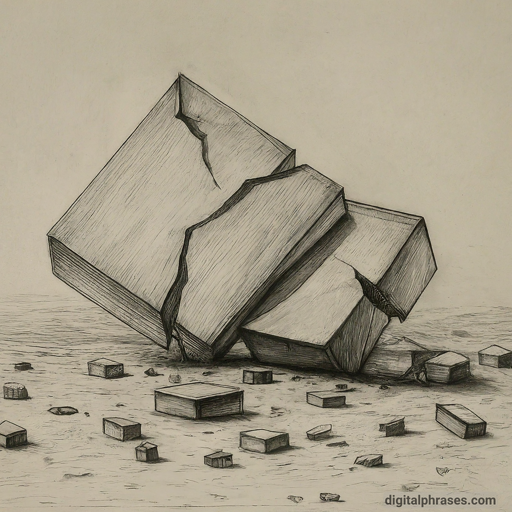
A Stack of Cubes in Perspective
Start with the cube closest to you, making sure the lines are straight and even.
As the cubes stack upwards, make sure those back edges move slightly closer together, getting smaller as they get further away – that’s perspective!
Does the light fall on the stack from one side, creating shadows between the cubes?
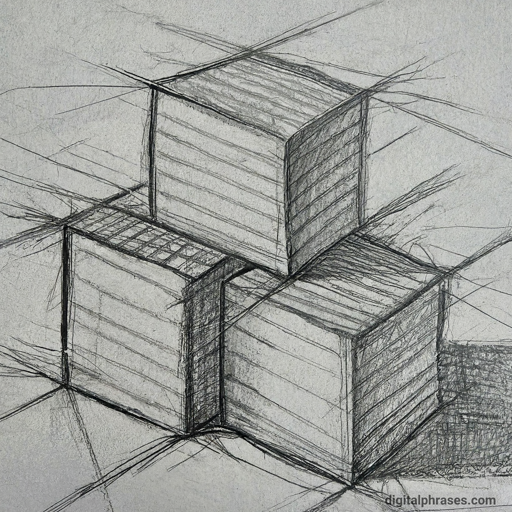
A Pyramid Casting a Long Shadow
Draw your pyramid with clean lines, its tip pointing upwards.
Now, imagine the sun shining from one side. Picture the long triangular shadow stretching out from the pyramid’s base.
Is the pyramid sitting on smooth sand, where the shadow will have a sharp edge?
Or, perhaps, it’s on rough ground, where the shadow might be softer?

Interlocking Triangles
Start with one triangle, and then another, its tip fitting perfectly into the space of the first. Keep going, triangles locking together like puzzle pieces.
You can use different colors or patterns inside each one to create a vibrant design. Imagine them as stained glass, or woven fabric!

A Spiral Pattern
Begin by drawing a tiny dot in the center of your page. With a smooth, curving line, let it spiral outward, getting wider and wider.
Can you make the spiral perfectly smooth, or will it have a wobbly, organic feel?
Think about where you see spirals in nature – seashells, flowers, even weather patterns!

Checkerboard Floor Tiles
Start with one square, then draw more, alternating colors, just like a classic checkerboard!
Instead of perfectly straight lines, try giving your tiles a slightly warped, handmade look.
How does the light reflect off their surface?
Are they shiny, or more matte and textured?
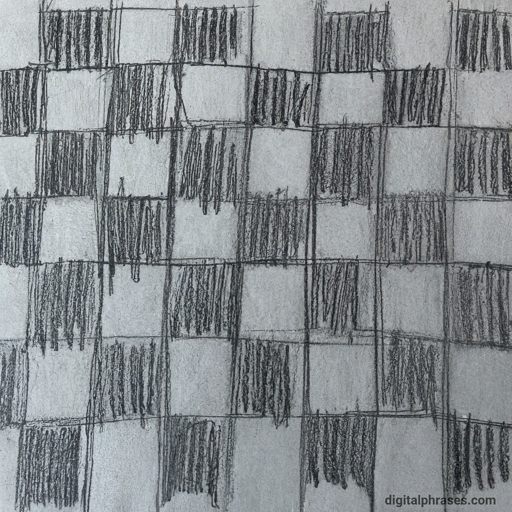
Overlapping Geometric Shapes
Imagine a circle peeking out from behind a square, and a triangle resting on top of them both.
Play with the size of your shapes and how much they overlap. You can keep it simple with just a few shapes, or create a complex, layered design.
Use shading to give the illusion of depth!
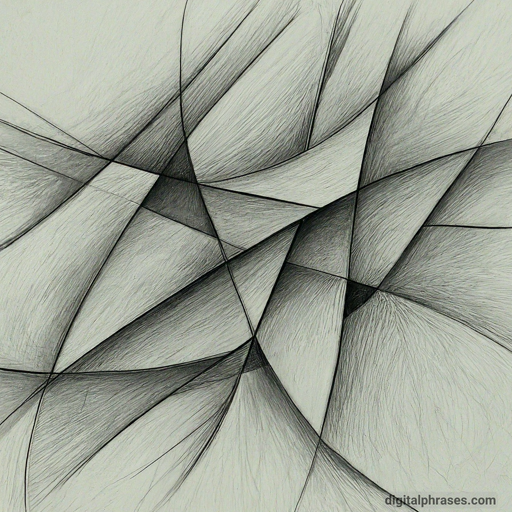
Nature Inspiration
Detailed Sketch of a Leaf
Start by studying a real leaf!
Notice the delicate veins running through the center, dividing into a web of smaller lines that travel outwards.
Pay attention to the leaf’s overall shape – is it broad and heart-like, or narrow and pointed?
Are there tiny notches along the edge, or is it smooth?
Capture the texture: is the leaf waxy and smooth, or slightly fuzzy?
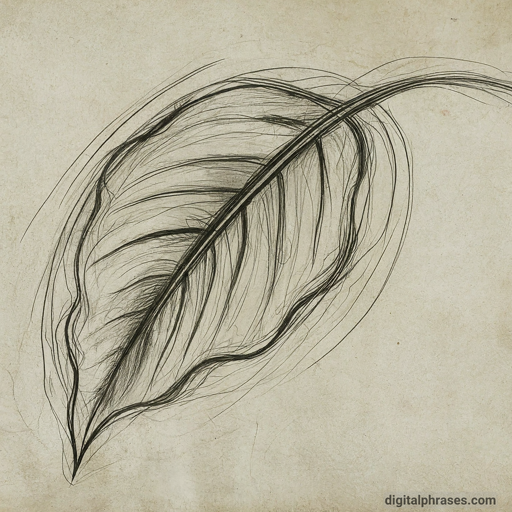
A Field of Wildflowers
Start with a horizon line, gently curving to show the dip and rise of the ground.
Don’t worry about drawing every single flower perfectly!
Use small dots, dashes, and varied shapes to suggest the different flower heads, all at different heights.
Think long stems bending in the breeze and clusters of leaves near the ground.
Use different shades of green for the foliage and bright pops of color for the wildflowers.
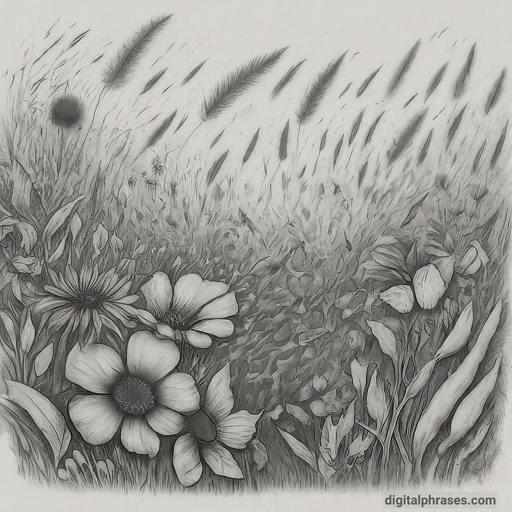
A Close-up of Tree Bark
Is the bark rough and deeply grooved, or smooth with just a few subtle lines?
Focus on just a small section of the trunk. Use short, overlapping lines to capture the texture – vertical lines for a rougher bark, or slightly curved and horizontal for a smoother type.
Experiment with shading to show how the curve of the trunk creates areas of shadow and light.
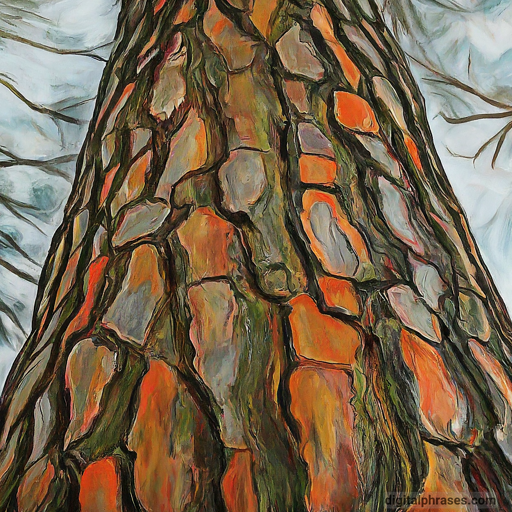
A Seascape with Rolling Waves
Start with the horizon line where the water meets the sky.
To draw rolling waves, start with smooth, gently curving lines.
The waves closest to you will be the biggest – make them smaller as they get closer to the horizon.
Show the crest of a wave with a bit of white foam, and add a few subtle lines to suggest ripples on the water’s surface.
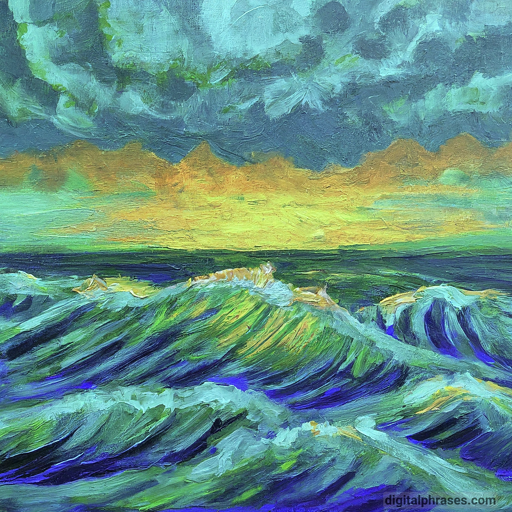
A Single Feather with Intricate Details
Focus on the main central stem of the feather – is it thick and sturdy, or thin and delicate?
The fluffy barbs of the feather will branch out from either side. Think soft curves, but also tiny notches where the barbs separate.
Use shading to show how the light catches the feather’s surface, making some parts shine brightly and others fade in shadow.
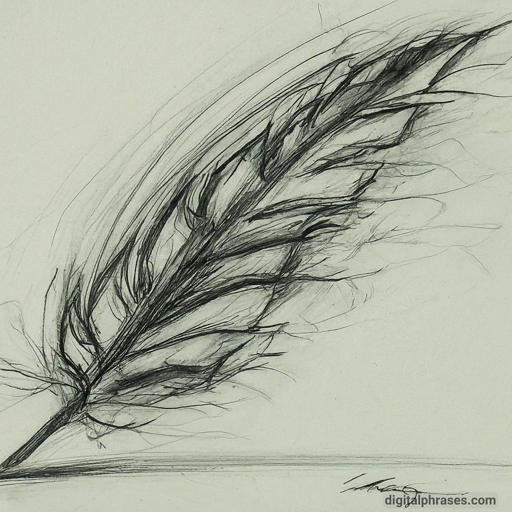
A Starry Night Sky
Begin with a dark background.
Use a white pencil or very light touch to create your starfield. Instead of perfect dots, try drawing tiny ‘x’ shapes or little dashes to make them twinkle.
To suggest groups of stars, place them close together to form constellations.
If you want to include the Milky Way, use soft smudging to create a cloudy path across the sky.
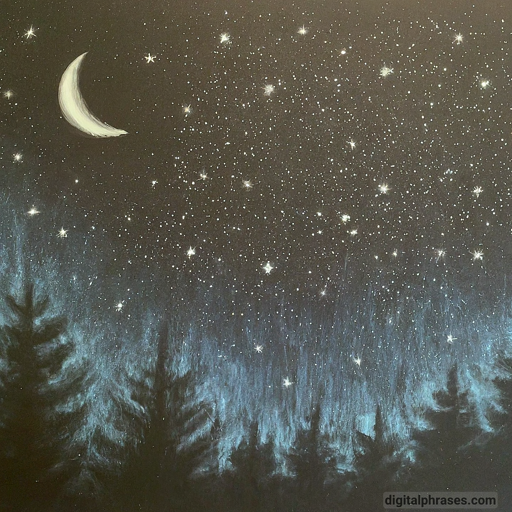
A Mountain Range at Sunset
Pay attention to the jagged shapes of the mountain peaks – do they slope gently or rise steeply?
Draw a series of triangles in different sizes, some overlapping to create a sense of depth.
For the sunset, start with a wash of warm colors blending from orange into red and purple as it moves towards the top of the page.
Keep the mountains as dark silhouettes against the vibrant sky.
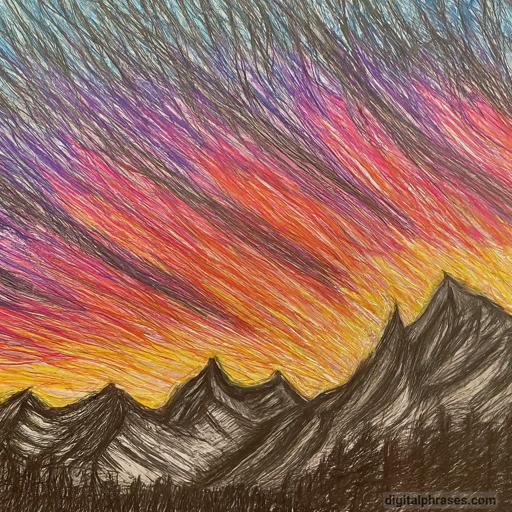
A Bird in Flight
Study the overall shape of the bird’s body in flight – does it have a long slender neck like a heron, or a more rounded body like a pigeon?
The wings are the key: think of long curves, slightly wider at the body and tapering towards the tip.
Do the feathers overlap like shingles, or is the wing a smooth unbroken surface?
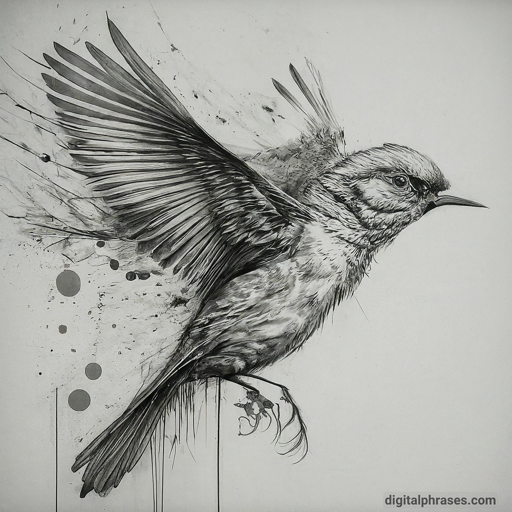
Everyday Objects
A Bowl of Fruit
Imagine a rustic wooden bowl filled with a colorful assortment of fruit.
Focus not just on the shapes, but the textures – the smooth skin of an apple, the bumpy peel of an orange, the tiny seeds of a sliced kiwi.
Notice how the light casts soft shadows inside the bowl, and how the fruits nestle against each other.
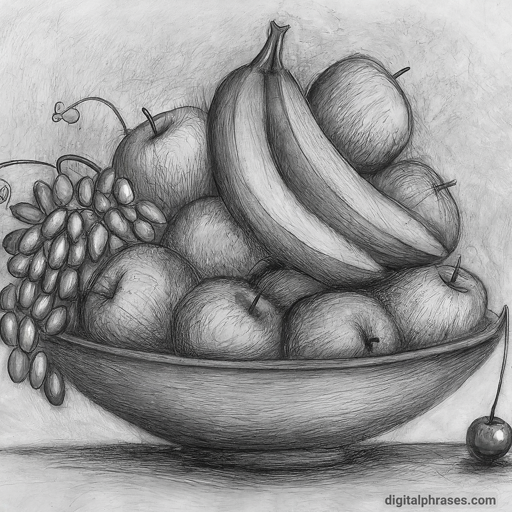
A Pair of Old Shoes
Picture a well-worn pair of shoes, maybe scuffed leather boots or faded canvas sneakers.
Draw the wrinkles and creases in the material.
Are the laces knotted, or trailing onto the floor?
Is there a patch of dried mud on one sole, a story of past adventures?
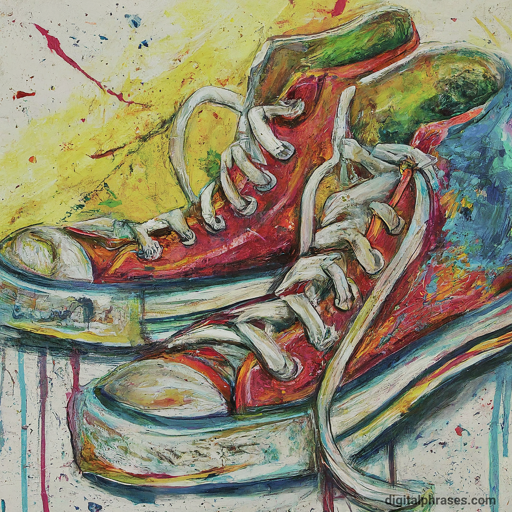
A Stack of Books on a Shelf
Imagine a stack of books slightly askew on a dusty shelf.
Draw the varied sizes, the worn spines with faded titles, maybe a bookmark poking out.
Notice how the weight of the books creates subtle bends in the shelf.
If there’s a tiny sliver of space, perhaps you can see a cobweb clinging to the wall behind!
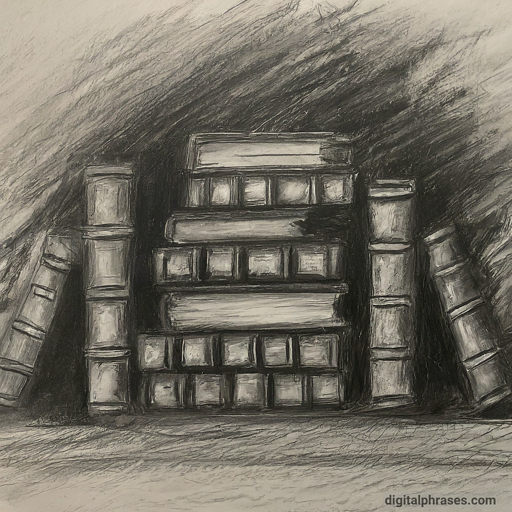
A Bicycle Leaning Against a Wall
Start with the curve of the wheels. Notice how the spokes create interesting patterns.
Follow the frame, drawing the handlebars where they curve, and the pedals waiting at the ready.
Maybe the wall is brick, or peeling paint – use texture to add personality to the scene.
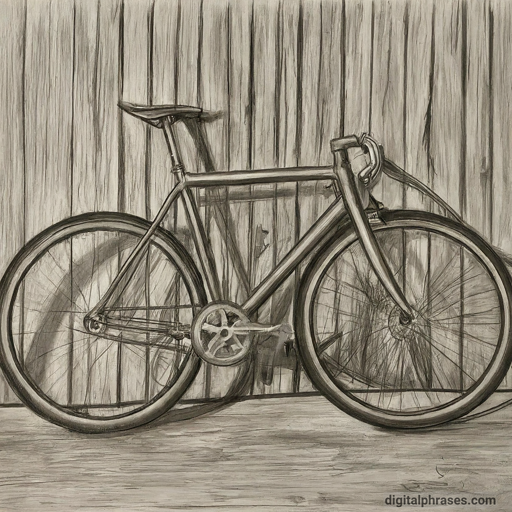
A Crumpled Piece of Paper
Imagine the sharp folds and creases of a piece of paper crumpled then discarded.
Pay attention to how the shadows fall along the folds, creating dramatic highlights and darker areas.
Can you see any writing or marks on the paper before it was crumpled?
Does the edge have a slight tear?
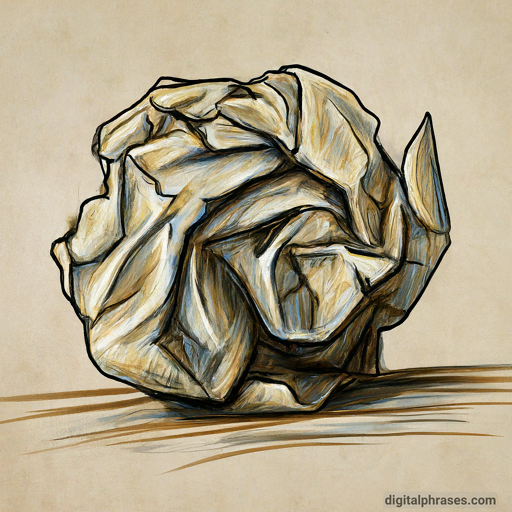
A Cozy Mug Filled with Coffee
Start with the gentle curve of a ceramic mug.
Is it chipped on the rim, or smooth and pristine?
Draw the wisps of steam rising from the warm coffee inside.
Imagine the reflection of light on the dark liquid surface.
Perhaps a spoon peeks out, or the foam creates a heart shape at the top.
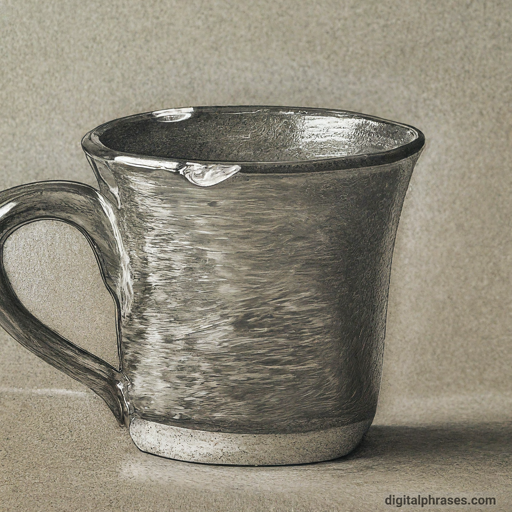
A Vintage Clock
Picture an ornate clock, its face slightly yellowed with age.
Pay close attention to the intricate details – Roman numerals, swirling hands, maybe even a tiny pendulum swinging back and forth.
Draw the crackle of the old finish, and imagine the faint ticking sound it would make.
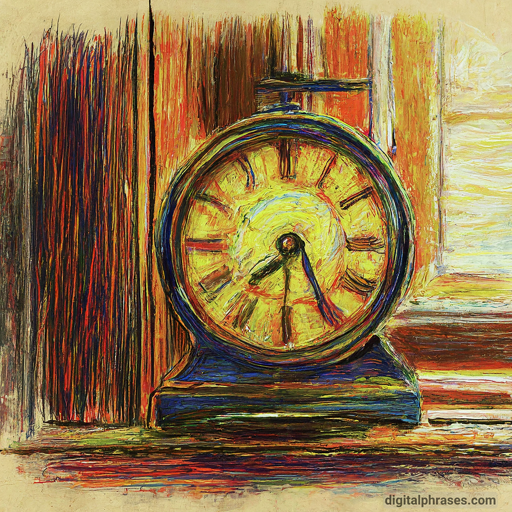
A Cluttered or Clean Desk
Imagine a cluttered desk piled with papers, pencils scattered randomly, and half-empty coffee mugs.
Don’t just draw the shapes of the things – show a book open halfway, a laptop cord tangled on the floor, crumpled sticky notes stuck to the side of the monitor.
If cluttered desk is difficult for your liking, you can draw a clean simple desk as well.
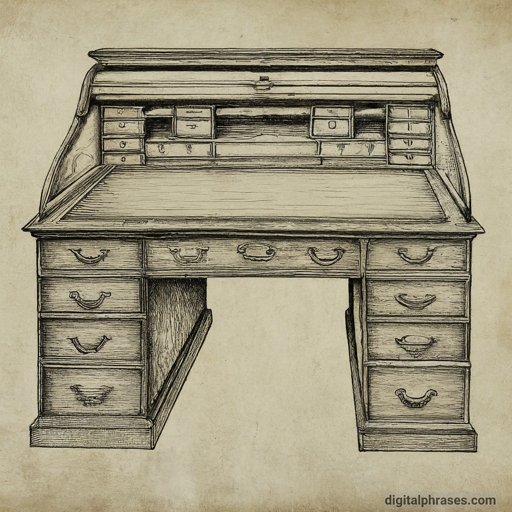
Fun with Perspective
A Long Road Disappearing into the Distance
Start with two lines converging towards a single point on the horizon – that’s your vanishing point!
The road should get narrower the further back it goes.
Is this a smooth, paved highway, or a dirt track winding through a landscape?
Add details like road markings, or maybe a few distant trees or hills to show how far it stretches.
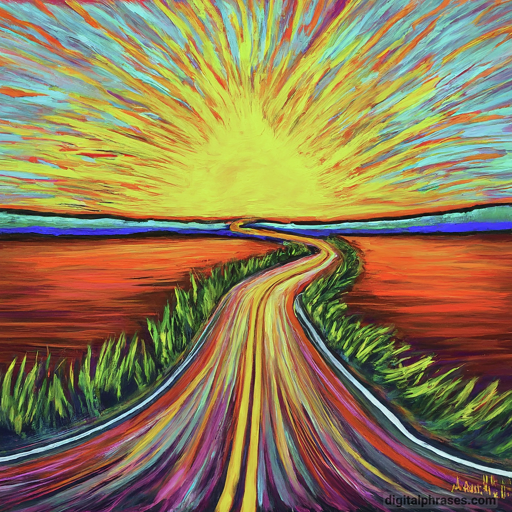
A City Block with Buildings in Perspective
Start by drawing the fronts of a few buildings along a street.
Remember, the lines that go back should get closer together as they head towards the vanishing point.
Do your buildings have windows and doors?
Are they tall and narrow, or short and stout?
Don’t be afraid to overlap them and create a busy cityscape.

A Row of Telephone Poles
Picture the closest telephone pole large and detailed.
It has wires crisscrossing near the top.
As the poles march into the distance, make them smaller and smaller, with the wires getting less defined.
Do they follow the curve of a road, or a straight line across flat land?
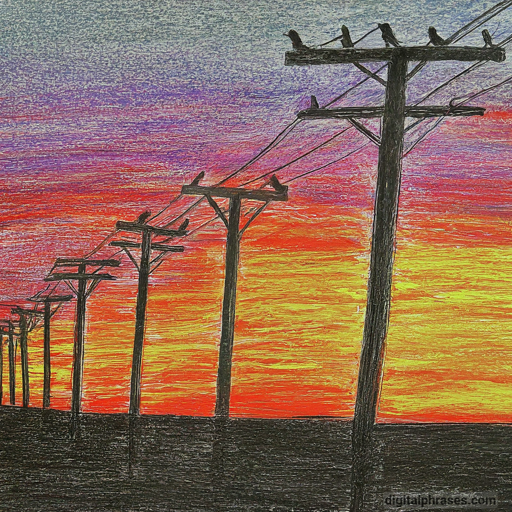
A Staircase Leading Upwards
Start with the bottom step wide and close to you.
As the stairs rise, make them get narrower and closer together. Remember that you’re looking up, so the underside of each step will be visible!
Add a railing snaking upwards – does it have a decorative design?
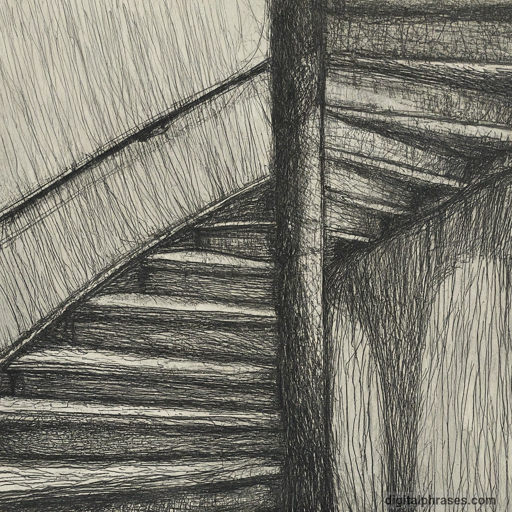
A Stack of Boxes from Below
Imagine you’re looking up at a haphazard pile.
The bottoms of the boxes will take up most of your paper. Draw the edges of the boxes tilting to show they are stacked at odd angles.
Maybe one box is open with something peeking out – get creative!
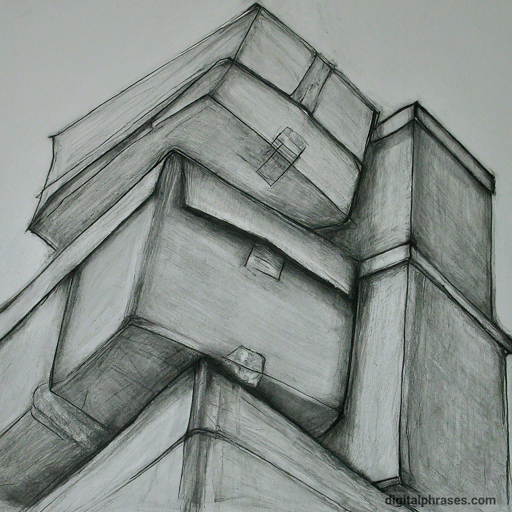
A Tabletop Viewed from Above
Start with a simple outline of the tabletop shape.
Now, what’s on the table?
Maybe a mug, a notebook, scattered papers?
Think about how those objects look when flattened from above.
They might become ovals or interesting distorted shapes.
Don’t forget to add a subtle shadow underneath everything to ground it.
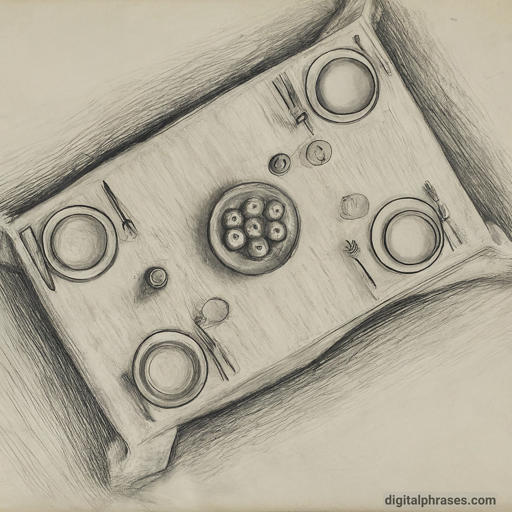
A Room with a Window Looking Outside
Begin by outlining the basic shape of the room – will it be square, long, or have interesting angles?
Place a window on one wall and sketch in the simple shape of the view outside – maybe rolling hills, the spires of a city, or a cozy backyard.
Add details inside the room like furniture, and think about how the light from the window streams across the floor.
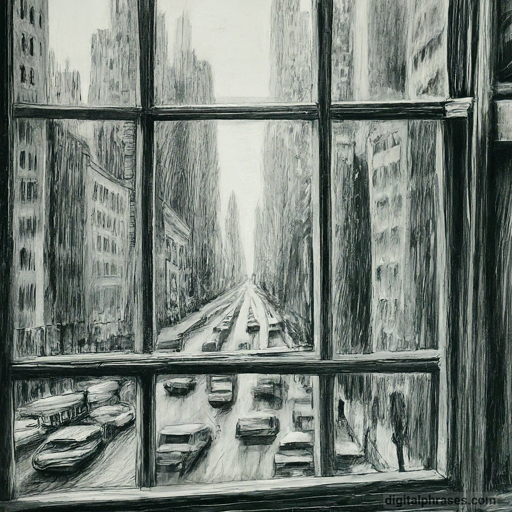
A Shadow Stretching Across the Ground
First, decide on your object casting the shadow – a person, a tree, a lamppost?
Draw the solid shape of the object, then think about where the light is coming from. The shadow will stretch in the opposite direction, getting longer if the light source is low.
Try adding textured details to the ground where the shadow falls.

Imaginary Worlds
A Treehouse Village
Imagine giant, old trees with thick winding branches.
Treehouses of all shapes and sizes cling to their trunks – some round and cozy, others tall and angular.
Rope ladders and bridges connect these houses, maybe even a twisty slide!
Add in playful details like hanging lanterns, fluttering flags, and perhaps a friendly creature peeking out of a window.

A Floating Castle in the Clouds
Picture a magnificent castle with tall towers and pointed roofs, defying gravity as it floats amongst fluffy white clouds.
Draw wispy tendrils of cloud wrapping around the castle base.
Does it have grand windows and a fluttering banner?
Perhaps a flock of birds is circling its highest tower.
Think about the light – is the scene bathed in warm sunset colors, or is a soft moonlight illuminating the castle?
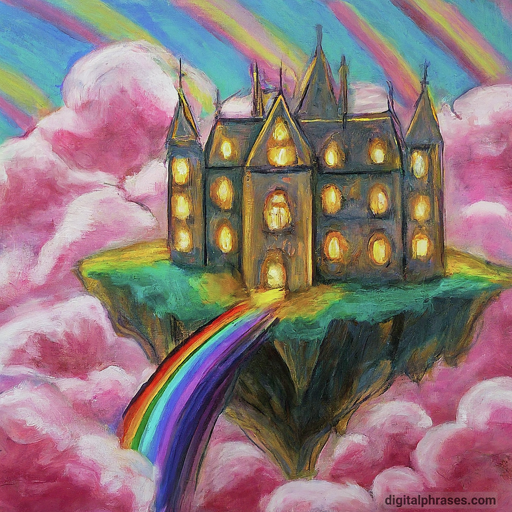
An Underwater City with Mermaids
Imagine buildings made of coral and seashells, their shapes inspired by marine life.
Draw shimmering schools of fish, gently swaying seaweed, and even a playful mermaid or two with flowing hair.
Where does the light come from – filtering through the water from above, or from glowing lanterns within the city?

A Dragon Guarding a Treasure Chest
Picture a mighty dragon coiled around a gleaming treasure chest overflowing with gold coins and glittering jewels.
Is the dragon fierce, with smoke curling from its nostrils, or more relaxed, with a glint of amusement in its eye?
Draw the scales on its skin and the sharp spikes running down its back. Is the treasure hidden in a dark cave or out in the open?
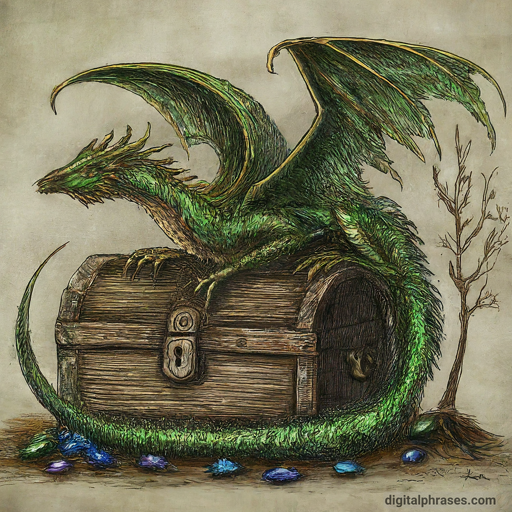
A Map of a Fantastical Island
Let your imagination run wild!
Draw a coastline with hidden coves and jagged mountains.
Mark random locations if you want to.
Add symbols for secret caves, forgotten ruins, and even a swirling whirlpool out at sea!
Decorate the map with a compass rose and maybe a fantastical sea creature or two.
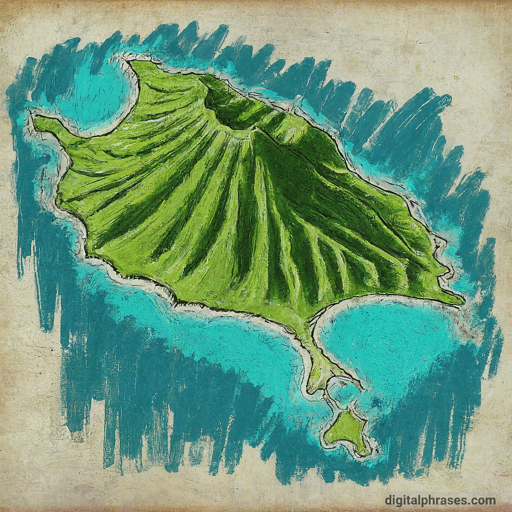
A Portal to Another Dimension
Imagine a swirling vortex of shimmering colors, crackling with energy.
Is it a perfect circle, or a jagged, unstable doorway?
What’s visible on the other side – are those stars from another galaxy, or a strange landscape of glowing mushrooms?
Sparks and flashes of light could surround the portal, hinting at the power within.

A Spaceship Exploring a Distant Planet
Picture a sleek spaceship with blinking lights and a trail of cosmic dust swirling behind it.
Is it landing on a planet with towering alien trees and glowing plants?
Or perhaps it’s exploring a frozen ice world, with shimmering crystal formations?
Don’t forget the astronauts peering out the window, excited to discover what this new world holds.

A Robot with Quirky Features
Imagine a robot with mismatched arms, perhaps one is a claw and the other a giant magnifying glass.
It might have gears and wires peeking through its rusty metal body and a mismatched antenna poking out of its head.
Maybe it’s on wheels, or has rocket boosters instead of legs! Give your robot a friendly expression, like a big lopsided grin.
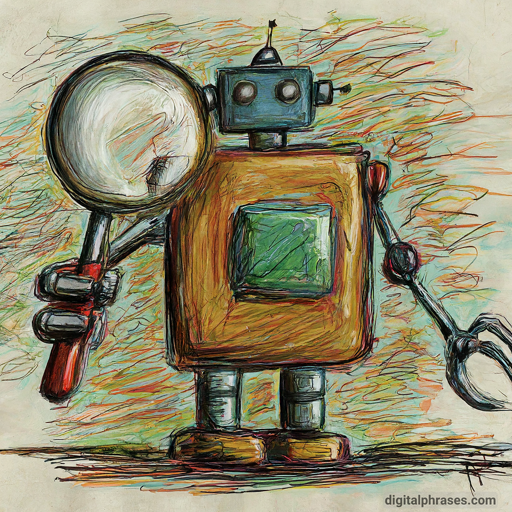
Holiday and Seasonal Themes
A Decorated Christmas Tree
Picture the shape of a classic pine tree, its branches reaching out gracefully.
Is it covered in sparkling ornaments, each hanging by a tiny hook?
Draw colorful strands of lights wrapping around the tree, and don’t forget the star shining brightly at the top!
Is there a pile of presents nestled beneath its branches, waiting to be opened?
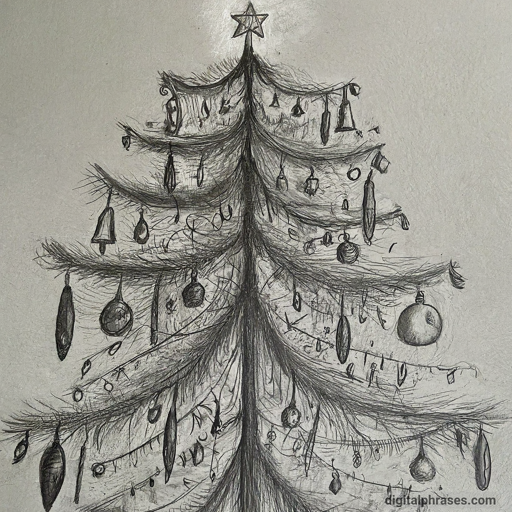
A Spooky Jack-o’-Lantern
Imagine a big, round pumpkin with a jagged, grinning mouth and triangular eyes.
Does it have a mischievous smile or a menacing scowl?
Perhaps it has a crooked nose and a single, wonky tooth!
Is there a candle flickering inside, casting spooky shadows?
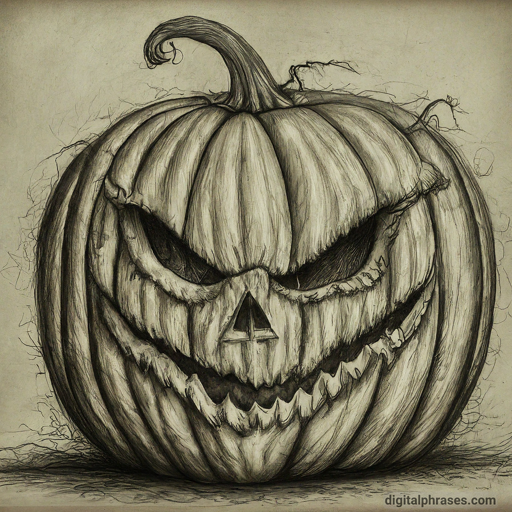
A Plate of Thanksgiving Dinner
Start with a large oval plate, and fill it with all your holiday favorites!
Draw the golden-brown roasted turkey with crispy skin, a heaping pile of creamy mashed potatoes, and a vibrant cranberry sauce.
Maybe add some green beans sprinkled with slivered almonds, or a warm slice of pumpkin pie.

Fireworks Bursting in the Sky
Imagine a dark night sky as your canvas.
Picture bright bursts of color exploding outwards – streaks of red, white, and blue, or maybe even shimmering gold!
Do the fireworks have long, trailing tails or do they burst in a shower of sparks?
Maybe you can see faint outlines of buildings or trees in the distance.
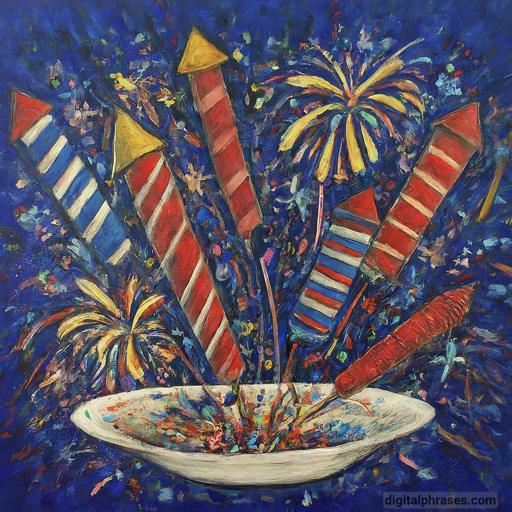
A Heart Filled with Candy for Valentine’s Day
Start with a big, bold heart shape.
Fill it to the brim with all kinds of colorful candy!
There could be shiny conversation hearts with sweet messages, pink and red jelly beans, and maybe even a few chocolate kisses.
Can you draw the crinkly wrappers and different textures of the candy?
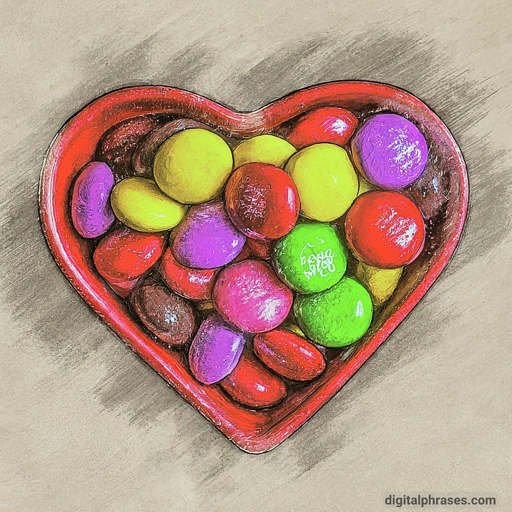
A Colorful Easter Egg
Picture a smooth, perfectly shaped egg.
Is it decorated with intricate swirls and patterns?
Maybe it has bright stripes or playful polka dots!
Imagine the vibrant colors you could use – springtime pinks, cheerful yellows, and fresh greens.
Perhaps there’s a tiny chick peeking out from a cracked eggshell.
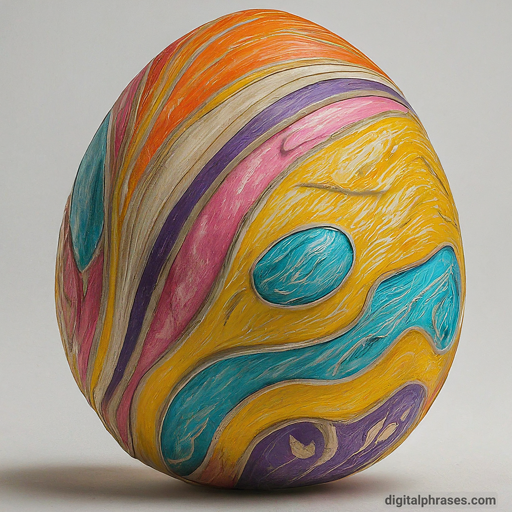
A Dreidel for Hanukkah
Draw the four-sided shape of the dreidel – it has a rounded top and tapers to a point at the bottom.
Don’t forget to add the Hebrew letters on each side!
Is your dreidel made of smooth, polished wood or brightly painted ceramic?
Maybe it’s resting on a pile of golden gelt coins.
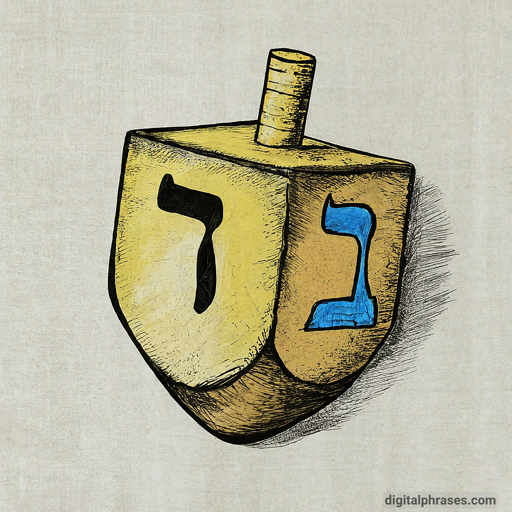
A Festive Diwali Diya
Picture a small, rounded clay lamp with a pointed tip for the flame.
Draw the intricate designs that often decorate these lamps – maybe there are swirling patterns or delicate flowers.
Imagine the warm, flickering glow of the flame, casting soft shadows on the ground around it.
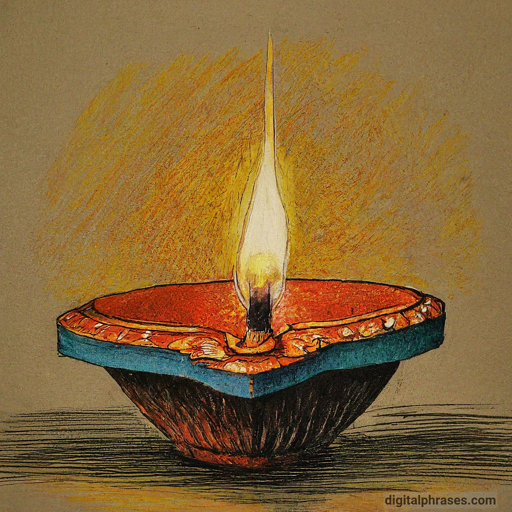
Remember, the best part of drawing is the process!
Don’t worry about perfect results. It’s about enjoying the joy of creating.
Start, relax and have fun along the way.

